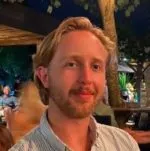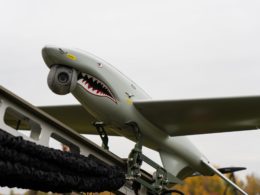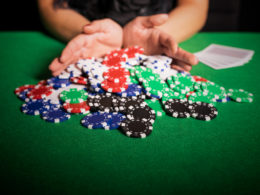A report published by the London-based Royal United Services Institute (RUSI) defense and security think tank has shone a light on Russia’s initial invasion plans, revealing how Russia’s strategic objective was the subjugation of the Ukrainian state and how the plans were formulated first and foremost by Russia’s special services and a small group of senior officials led by President Vladimir Putin.
The report, which details Ukraine’s strengths and vulnerabilities during the early phases of the war and what lessons can be drawn, includes in its first chapter details of Russia’s invasion plans “as set out in captured copies of the orders issued to a range of Russian units.”
Russia's invasion goal: destroying Ukraine's national sovereignty and banning Ukrainian identity
The report notes that the goals of the Russian invasion included “the destruction of national sovereignty and the banning of Ukrainian identity and ‘demilitarisation,’ the destruction and banning of the UAF and the export to Russia of enterprises of the defense industrial complex of Ukraine, but also ‘denuclearisation,’ the capture of nuclear power plants and their transfer to the direct management of Rosatom.”
The authors of the report, which include Ukrainian Lieutenant-General Mykhaylo Zabrodskyi, former adviser to Ukraine’s Ministry of Defence and Foreign Intelligence Service Oleksandr V. Danyliuk, along with a pair of RUSI analysts, had exclusive access to Ukrainian military data and note that the underlying source materials for much of the report cannot yet be made public.
Testing the waters
Russia’s military build-up on Ukraine’s borders began in March 2021 when a greater force of conventional troops was added to existing forces along Ukraine’s borders. The rationale behind this move was to provide “an opportunity for Moscow to assess the reaction of Ukraine’s international partners.”
However, the threat posed by this build-up was dismissed by Ukraine’s allies “because they did not observe the necessary enablers deployed with the Russian formations nor the necessary political shaping of the information environment in Russia to support an invasion.”
This in turn confirmed to the Kremlin that enablers could be brought to the formations faster than Ukraine’s partners could bring military capabilities.
The report reveals that in July 2021, the 9th Section of the 5th Service of Russia’s Federal Security Service (FSB)
was enlarged into a directorate and tasked with planning for the occupation of Ukraine. As part of the preparations, the FSB “drew on extensive surveys carried out in Ukraine.”
Russia’s FSB, NSDC chiefs main ideologists of Ukraine war – The Times
Naivety and optimism bias: driving factors of the Russian invasion of Ukraine
What follows next was confirmation bias of an industrial scale on the part of the FSB which has become routine in Russia’s political system. The surveys conducted by the FSB reportedly “painted a picture of a largely politically apathetic Ukrainian society that distrusted its leaders, was primarily concerned about the economy, and thought an escalation of the war between Russia and Ukraine was unlikely.”
Calling these reports inaccurate and false would be a gross understatement.
Russia’s further confidence was shaped by assurances from General Valery Gerasimov who allegedly told international interlocutors on the outbreak of the war “I command the second most powerful Army in the world.” Separately, Gerasimov told counterparts in the United Kingdom that Russia “had achieved conventional military parity with the US.”
The authors’ findings reveal that Russia’s planning was riddled with naivety and optimism bias. For example, the assertion in Russian planning that Ukraine could only generate only 40,000 additional troops was premised on the “anticipated speed of the operation rather than an appreciation of Ukraine’s capacity for mobilization.”
Furthermore, the “assumption appears to have been that Ukrainian government officials would either flee or be captured as a result of the speed of the invasion.”
This however never materialized. The day after the invasion, amid all the chaos, the Russian propaganda machine went into overdrive claiming President Volodymyr Zelenskyy had fled the country only for Zelenskyy to release his now infamous video proclaiming “the President is here” while flanked by Davyd Arakhamia, Andriy Yermark, Denys Shmyhal, Mykhailo Podoliak.
President of Ukraine Volodymyr Zelenskyy, Prime-Minister Denys Shmyhal and other officials share video they are in Kyiv, stay with people. "We are here, defending our state, and so it will be," Zelenskyy said. pic.twitter.com/JeTsRimXaK
— Euromaidan Press (@EuromaidanPress) February 25, 2022
Russia had also “anticipated that shock would prevent the immediate mobilization of the population and that protests and other civil resistance could be managed through the targeted disintegration of Ukrainian civil society.”
Instead, the vast majority of Ukrainians welcomed the announcement of general mobilization with civilians from all walks of life taking up arms to defend their land. Meanwhile, ordinary Ukrainians launched massive protests in occupied cities such as Kherson and Melitopol and although Russian troops eventually crushed the protests, the resistance movement went underground with organized partisan contingents spawning and mounting a guerrilla war against the occupying force.
https://twitter.com/EuromaidanPress/status/1500529654268145670
Wargames to kill Euromaidan activists
The report reveals disturbing details of the FSB’s tasks during the invasion reminiscent of the activities of its predecessor agency, the People's Commissariat for Internal Affairs (NKVD), during the Second World War and the immediate aftermath in Eastern Europe.
The FSB was tasked with capturing local officials and lists were compiled that divided Ukrainians into four categories:
- those to be physically liquidated;
- those in need of suppression and intimidation;
- those considered neutral who could be induced to collaborate;
- and those prepared to collaborate.
Leading up to the invasion, the FSB had conducted wargames with detachments of the Russian Airborne Forces to conduct kill-or-capture missions
but “in many cases, the purpose of capture was to put individuals involved in the 2014 [Euromaidan] Revolution of Dignity on trial to be executed.”
In a hark back to Stalinist-era repressions, Russia had planned to use filtration camps to “establish counterintelligence files on large portions of the population in the occupied territories.” These filtration camps would have been used to determine whether Ukrainian civilians “needed to be displaced into Russia, and to lay the groundwork for records to monitor and disrupt resistance networks.”
Over time, Russia had planned to completely eradicate any trace of Ukrainian identity, culture, and history by starting with bringing “teachers and other officials […] to engage in the re-education of Ukrainians.”
With regard to political control, there was a regional and national component.
- On the national level, the objective was “the murder of Ukraine’s executive branch and the capture of Parliament,” while
- on the regional level, Russia would have focused its efforts on “coerced cooperation of regional governors and local authorities.”
With Parliament firmly occupied by Russian troops, the pro-Russian parliamentary faction would have been encouraged to form a “Movement for Peace” that other factions would be coerced to support. Meanwhile, electricity, water cuts, and blockers on finance from the central bank would be used as leverage across rebellious regions.
Extreme secrecy of Russian plans to invade and occupy Ukraine
The plans were reportedly “drawn up by a very small group of officials and the intent was directed by Putin” while many “officials executed elements of the preparations were unaware of the wider intent.”
Even Russia’s military personnel “up to deputy heads of branches within the General Staff” were unaware that the intention was to invade and occupy Ukraine until days before the invasion while “tactical military units did not receive orders until hours before they entered Ukraine.”
Captured docs reveal date when Russia greenlit Ukraine invasion
While the secrecy around the plans helped to achieve operational surprise (it also appears to have surprised the Russians themselves), the “tiny pool of personnel involved contributed to a range of false assumptions that appear never to have been challenged.”
Many of the failures in the early phases of the war, such as the number of axes embarked upon, the small size of its force employed for many several tasks, and the failure to develop appropriate contingencies “is indicative of many contributing technical judgments to the planning not having been fully briefed about the overall context.”
The authors state that it appears “no independent red teaming appears to have taken place” and although the invasion plan, while theoretically plausible, was “compounded optimism bias in each of its stages.” Most tellingly, there is “no evidence in the Russian planning that anyone had asked what would occur if any of its key assumptions were wrong” and perhaps most consequential of all, none of the planning afforded any agency to Ukraine.
 Klaidas Kazak is a British civil servant and a graduate of the School of Slavonic and East European Studies at University College London.
Klaidas Kazak is a British civil servant and a graduate of the School of Slavonic and East European Studies at University College London.
Note: The report puts the rate of the success of Ukraine's air defense at the onset of the invasion at 12–18%. Since that time, it has increased significantly, up to 88%.
For more about Russia's war plans, but from 2014-2016, see this RUSI report by Euromaidan Press editor-in-chief Alya Shandra:
The Surkov Leaks: Major report on Russia’s hybrid war in Ukraine published at RUSI Institute
Related:
- Ukraine’s air defense improved fourfold since start of Russian invasion
- Russia plans to change demographics of occupied Ukraine territories – Resistance center
- Created in three days, Ukraine’s territorial defense ruined Russian plans to capture Kyiv
- Like Napoleon’s 1812: why Russian troops retreated from northern Ukraine
- Ukraine needs long-range missiles to really win the war, country’s top generals say
- Russian war crimes: “denazifying” Ukrainians through deportation, torture, detention and filtration camps
- Russia corners Ukrainians in filtration and deportation
- Captured docs reveal date when Russia greenlit Ukraine invasion
- Russia’s FSB, NSDC chiefs main ideologists of Ukraine war – The Times





